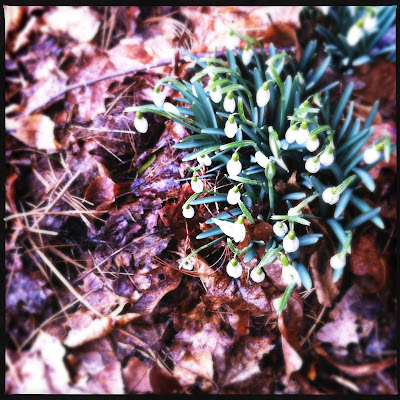This is the last Sicilian cookie recipe for a while. Promise. I saved my favorite for last– spiced chocolate balls, or tetù. The dough is a fairly standard Sicilian recipe with the added eastern exoticism of cloves and new world chocolate.
As a child, Sicilian cookies were a much anticipated treat at my grandmother's house or her sister's, my great aunt Deda, especially during holidays. They always kept assorted collections in old shortbread cookie tins always lined with waxed paper. The lid would come off and the tin would be placed in the middle of the table with the pronouncement, "dui cookie" (2 cookies), a self-mocking, family joke, funny if only because it had been uttered thousands of times before, with the willful mash-up of English and mangled Italian that was stock-in-trade humor in my grandmother's extended family. I would stretch myself out to peer into the magic cornucopia of home baked biscotti and greedily extract all the tetù I could find. I would have to be quicker than my great uncle who shared a similar, obsessive preference for them. My great aunt Deda would look on with satisfied amusement at the one child and mild annoyance at the other.
I have a family recipe for these cookies, culled from a great aunt or second cousin. It's filled with margarine and other mid-century shortcuts and substitutions so I've chosen to use a very authentic recipe from Victoria Granof, a great chef and food stylist in New York City. Her book Sweet Sicily is the best compendium of the island's deserts in English.
Tetù
1 cup blanched whole almonds
4 cups unbleached all-purpose flour
2 ounces unsweetened chocolate
1 cup milk
1 1/2 cups sugar
1 teaspoon ground cloves
2 teaspoons baking soda
1/2 teaspoon salt
1 teaspoon vanilla
1 egg, lightly beaten
Glaze
2 cups sugar
1 1/2 cups water
12 ounces unsweetened chocolate, roughly chopped
2 cups powdered sugar
Toast the almonds in a large pan over medium heat, tossing or stirring until brown. Let cool and then blend in a food processor or coffee grinder. Put into a large bowl and mix in the flour.
In a medium saucepan, whisk the butter, chocolate and milk, over low heat until the butter is melted. Whisk in the sugar and then remove from the heat and let cool.
Whisk the cloves, baking soda, salt, vanilla, and egg into the butter mixture. Stir the liquid ingredients into the dry ingredients until just combined. Cover and chill the dough for at least an hour.
Preheat the oven to 375˚
Pinch or scoop out a tablespoon full of dough and roll it between your palms to form a ball. Arrange on a parchment lined cookie sheet, 2 inches apart.
Bake the cookies for 15 minutes, or until puffy but still slightly soft in the center. Cool the cookies for 10 minutes before removing from the pan.
Make the glaze: In a medium saucepan, bring the sugar and water to a boil, whisking constantly. Boil for 3 minutes, then remove from the heat and whisk in the chocolate until melted. Whisk in the powdered sugar until smooth.
While the cookies are still warm, dunk them in small batches in the warm glaze and then put them on a cooling rack with a baking sheet underneath to catch the drips. The cookies and glaze should both be warm so that the cookies soak up the glaze.
Let the cookies cool long enough to firm up and become quite dense and the glaze hardens properly.
Store in a used shortbread cookie tin lined with waxed paper and serve with the pronouncement, "dui cookie" spoken in a thick Italian accent.




























